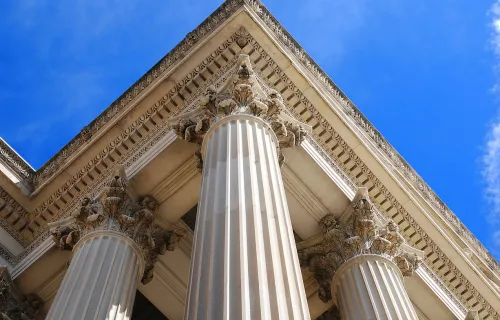State of Louisiana
Like other states and the nation, Louisiana faces serious budgetary challenges. The State has been committed to pursuing opportunities to improve the efficiency and effectiveness of government. A key goal for both the Governor and the legislature has been addressing the hundreds of millions of dollars in uncollected debt owed to the State. CGI was selected by the State to evaluate strategies for collecting more delinquent debt to raise revenues without increasing taxes. CGI's analysis identified two key opportunities for achieving dramatic improvements in Louisiana's debt collection: centralizing debt collections and modernizing collection systems. With the assistance of CGI's evaluation, the State was able to quickly move to enhance its collection operations, progressing from the RFP for analysis to enacted legislation authorizing centralized debt collection all within 9 months.
The Challenge
In 2012, in an effort to recover additional revenue from delinquent collections, the State of Louisiana enacted HB741. HB741 established a two-year pilot program to sell, securitize or auction portions of the State's long-term delinquent accounts.
The State had identified in excess of $1 billion in outstanding accounts receivable. This legislation provided their Cash Management Review Board (CMRB) * with an opportunity to establish the necessary policies and procedures to obtain the best return for the State.
The State also recognized it needed to begin discussions on how to evaluate and collect more revenue from its accounts receivable in an accurate, fair and fiscally responsible manner. The CMRB conducted a series of public hearings to gain insights on approaches to effectively collect more revenues from this source.
In September 2012, based on the hearings and an inability to value their accounts receivable, the State issued an RFP to hire a firm to "provide expert consultation and analysis … of the state's inventory of accounts receivables and debt owed to it."
As part of this effort, the State Division of Administration identified the following three-point plan for the collection of outstanding receivables:
- "Consolidate, centralize, and coordinate: Improving and supporting state debt function
- Trigger early action for delinquent payments
- Strengthen Enforcement."
Among other things, a key goal of this analysis was to determine how much money the State would collect under three different collection approaches:
- Sell their debt on the open market
- Continue to follow existing collection procedures
- Centralize collections into a new Centralized Collections Unit (CCU)
For this analysis, the State selected six agencies as their focus. These six agencies represented a majority of the State's outstanding receivables. Their receivables included tax debts, social services overpayments, higher education debts, and money owed to the department of transportation among others. In total, the debts for just these six agencies represented over $1.1 billion.
After a competitive procurement, CGI was selected to conduct this analysis.
The strategy
CGI's first step in the debt analysis project was to conduct an operational review of the six selected agencies, employing its ten-step process. This proven, methodology allows CGI to consistently and objectively compare collection organizations, operations and debt types to reliably determine opportunities for improvement, and estimate the potential revenue increases from implementing those opportunities.
Components of the review included:
- Gathering data to assess the current collection operations
- On-site interviews with collection staff to understand their operations
- Assessing current collections tools, processes and policies.
CGI's collection experts reviewed the data, assimilated the information and compared it to CGI's best practices catalog. To minimize intrusion and disruption, the review required only one or two days of on-site meetings per agency. The result was a report that:
- Compared Louisiana's current practices to national best practices
- Identified a set of opportunities available across multiple approaches
- Estimated the additional revenue likely to be generated and the timing for receiving those increases.
CGI also performed a detailed analysis of individual receivables to determine the estimated collections if they were part of a debt sale. This analysis was based on an industry survey of prior government debt sales.
Report findings
CGI's report outlined the opportunities for improvement and estimated the increase in collections based on benchmarks from similar programs in other states. Numerous opportunities for improvement were identified in the following categories:
- Business processes
- Collection information technology
- Data gathering and consolidation
- Debt modeling and analytics
- Legislation
In particular, two key opportunities were identified that, if pursued, would enable the State to achieve dramatic improvements in collections: 1) establishing a centralized collection operation; and 2) implementing a collection case management system robust enough to handle the more sophisticated business processes and larger account volumes that centralizing all delinquent state debts would present.
In general, agencies are focused on delivering services. Unlike the agencies it would support, a centralized collection operation would have as its core mission the collection the debts owed to the State. The centralized unit could also build the expertise needed to collect debts in the most efficient and effective manner possible. This unit's focus on collections would enable the originating agency to focus on its core mission, administering services to constituents.
The final CGI report was delivered to the State in March of 2013 and presented to the CMRB on April 4, 2013.
The results
Based on the report and a presentation by CGI to the leadership of many members of the Louisiana legislature and Executive Branch, the State passed and enacted HB629 in June 2013 to create a centralized collection function.
A key aspect to achieving the maximum benefits possible was the addition of new legislative authorities to collect this revenue. Most States give strong authority to their tax collectors to recover delinquent receivables. However, most give significantly less authority to other departments to collect their debts.
The recommendations outlined below now allow the new Louisiana centralized collections function to, in effect, collect other debts "like a tax," and assure consistent treatment for all debts owed to the State.
HB629 provided a number of authorities, all intended to increase collections within the State, including:
- Establishment of the Office of Debt Recovery (ODR) to collect all final receivables within the State.
- Identifying the ODR and the State Attorney General (AG) as the debt-collecting entities for all agencies.
- Mandating that all final debts be referred to the ODR within 60 days of the debt becoming final, and mandating that all non-final debts be referred to the AG within 60 days when the debt had been delinquent for 60 days.
- Establishment of a cost recovery fee, not to exceed 25 percent for debts that get referred to the ODR or AG to pay for their collection activities. This assures that this function was self-funded. This money was intended to be used to pay for departmental staffing, a new technology system to support the effort, and the cost to modify any existing systems to extract liabilities to the ODR and AG.
- Providing the following enhanced collection authorities as follows to perform the collections efficiently and effectively:
- Allow for the collection of non-tax debts with the same remedies available to the State for the collection of tax debts (including wage garnishments and bank levies)
- Granting authority for the State to intercept and offset any payment that would otherwise be made to debtors by the State, including lottery winnings
- Allow for matching of debtor bank accounts directly from a quarterly feed with banks (also known as Financial Institution Data Match)
- Allow for suspension and revocation of any state professional license
- Allow for suspension and revocation of other state licenses, including drivers licenses, hunting licenses and fishing licenses
- Mandate that all state agencies transmit any data deemed useful for collections to the ODR and AG for collection activities – without this requirement, there was a concern that confidentiality might preclude data sharing
- Provide that the ODR and AG can employ collection agencies and other third parties when needed
- Mandates the new collections function be in place by January 1, 2014.
The legislation overwhelmingly passed both houses of the Louisiana legislature, and in fact had only a single "no" vote between the two houses. It was signed by Governor Bobby Jindal on June 17, 2013.
The Governor issued the following statement about HB629, "When taxpayers send their hard-earned money to Baton Rouge, they do so with the expectation that state government will use that money in a responsible and efficient manner. By creating the office of debt recovery and better collecting funds owed to the state, we can use taxpayer dollars more responsibly and ensure that we continue funding critical services like education and health care."
Read more about Louisiana's centralized collections management case study
* The Cash Management Review Board is composed of the state treasurer, commissioner of administration and the legislative auditor.




